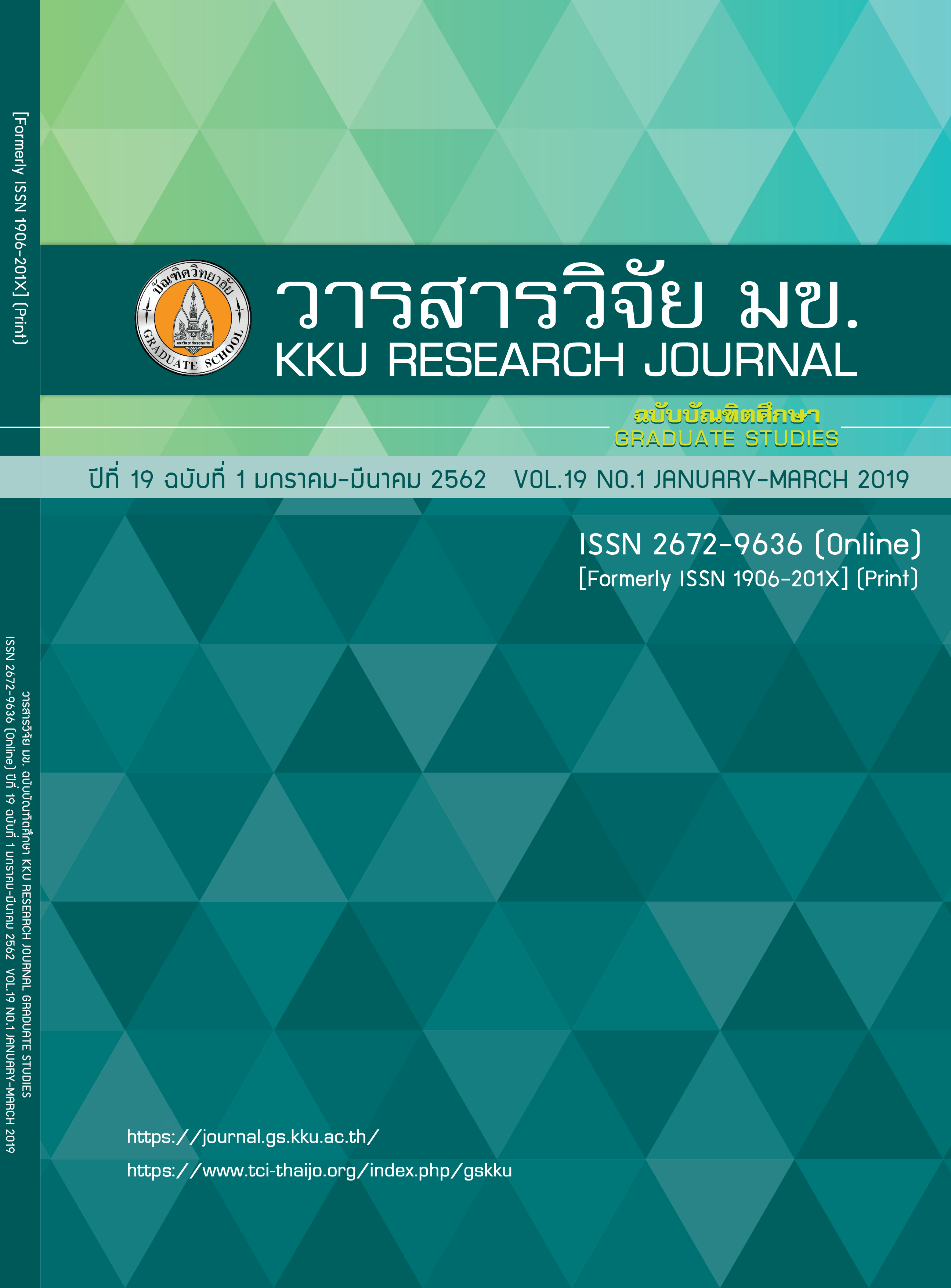Heavy Metal Immobilization Efficiency by Chitosan from Litopenaeus vannamei and Metapenaeus intermedius Shrimp Shell
Keywords:
Chitosan, Heavy metals, ImmobilizeAbstract
Contamination of heavy metals in croplands has been a serious environmental and agricultural problem. Therefore, this research aimed to use chitosan from Litopenaeus vannamei and Metapenaeus intermedius to immobilize heavy metals in soil to reduce the transfer of heavy metals to food chain via plant uptake and leaching to surface water and ground water. The batch adsorption experimental results revealed that 1 g of chitosan removed 100 % of Cd, Zn and Mn in solution at concentrations of 50, 5 and 20 mg/L and 99.2% of Pb at 20 mg/L. The maximum adsorption capacity of Cd, Pb, Zn and Mn were 250, 99.2, 25.1 and 100 mg/g of chitosan respectively. The analytical results of Cd, Pb, Zn and Mn in soil of zinc mining site at Mae Tao Sub-district, Mae Sot district, Tak province by US-EPA 3051A method and AAS technique were 37.6, 770, 135.5 and 500.8 mg kg-1 respectively. The continuous leaching test in mixture of contaminated soil with chitosan were investigated. The experimental results showed that on the 13rd or 14th day, four heavy metals were leached in high concentration. While the control experimental unit which has no chitosan, four heavy metals were leached in high concentration on the 1st day. Therefore, chitosan could be used to reduce and retard the heavy metals leaching from contaminated soil.
References
2. Jutarat K. Use of Chitosan from Shrimp Shell and Commercial Chitosan. Elimination of dyes in dye wastewater. Bangkok. Kasetsart University. 2013. Thai.
3. Soil quality standards for agricultural and residential uses. Pollution Control Department. [Internet] [updated 2018 Jan 25;Cited 2018 Feb 26]. Available from : http://www.pcd.go.th/info_serv/reg_std_soil.html
4. Surface water quality standards. Pollution Control Department. [Internet] [updated 2018 Jan 25; Cited 2018 Feb 26]. Available from : http://www.pcd.go.th/info_serv/reg_std_water05.html#s1
5. Sirinapa C. Extraction of chitosan from shrimp shells. [MSc thesis]. Bangkok. Kasetsart University; 2001. Thai
6. Chandumpai A, Singhpibulporn N, Faroongsamg D, Sornprasit P. Preparation and physic-chemical characterization of chitin and chitosan from the pens of the squid species Loligo lessoniana and Loligo formosana. Carbohydrate Polymers 58: 467-474. 2004.


